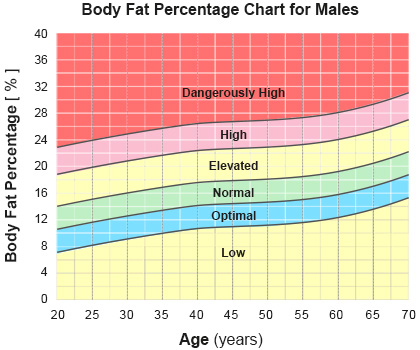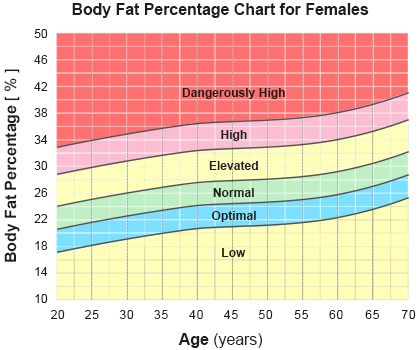My teenage brother sent me a TikTok of a doctor detailing the optimal body fat percentage for men and women. The doctor said six-pack abs were unhealthy and that being slightly overweight is best. My brother, confused by the message, asked me if this was true? Is body fat healthy? What’s an accurate way to measure it? And what levels are optimal for human health? Well, let’s get into it!
Body Fat
No doubt, the body requires healthy levels of body fat to function healthfully. Body fat is a store of energy required for movement and activity. It regulates hormone levels like testosterone, estrogen, and cortisol needed for immune health, menstrual cycles, and metabolic function. And too little fat will lead to noticeable degradations in everyday energy, health, and happiness. Any bodybuilder leading up to competition can attest to this. It’s not pleasant. But this issue rarely occurs in America unless you’re trying for it. [1]

Excess body fat should be everyone’s primary concern. Excess fat becomes a store of carcinogenic toxins. It destabilizes blood sugar regulation. And it adds stress to the heart. The greater the fatness, the higher the cancer risk. The greater the fatness, the higher the diabetes risk. The greater the fatness, the higher the heart disease risk. The risk is proportionate to the excess. So having as little as needed is best for diminishing disease risk. Plus, I don’t want to put added stress on all my organs for decades if I don’t have to. That’s a recipe for issues and I want to avoid it. [2]

But who cares about the risks 30 years out if life isn’t fulfilling today? Surely, carrying around a 30lb backpack all the time wouldn’t be enjoyable. Excess fat is just that. It makes everyday activities like walking, hiking, yard work, or housework more difficult. Compounded, is the effect it has on fatigue and energy. Are you constantly tired and frequently napping? Excess fat causes fatigue and increased daytime sleepiness. Are your feet, knees, or hips sore? Excess fat adds stress onto supporting joints and bones. Are you depressed, unhappy, or unmotivated? Excess fat causes increased risk for depression and loss of motivation. I don’t want excess fat.
Types of Body Fat
But is all body fat equal? Visceral fat is stored around organs and blood vessels. It’s commonly called the dangerous fat that leads to the long-term issues mentioned previously. Keeping this low is critical. Alternatively, subcutaneous fat is stored under the skin. It’s the blubbery fat people see that isn’t as dangerous… At least that’s what we’ve been told. Traditionally, visceral fat has been considered the major culprit, but a growing body of evidence is supporting the role of subcutaneous or abdominal fat with the same issues. Looks like all excess fat is bad fat. [4]
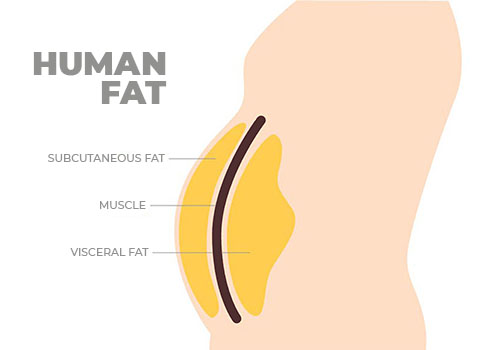
Some may argue that 50% of obese people are metabolically healthy though. That’s deceiving too. There’s no official definition for “metabolically healthy.” And the more components you consider, like blood pressure, cholesterol, and insulin sensitivity, the less “metabolically healthy” people there are. Considering most components brings that number down to 5% of obese people being “metabolically healthy.” Even those people are at an increased risk for disease, disability, and death compared to healthy weight people though. Make no fantasies about it, the facts say excess fat is bad and there are no healthy overweight people. [5] So, how can you determine your body fat percentage? And what’s the optimal level?
Measurement Methods
Do you have a smart scale that displays your body fat percentage? I do, and it’s horribly wrong. On its regular setting, it tells me I have 13-14% body fat. If I switch it to “athlete mode,” then suddenly I’m 6%. How much of an “athlete mode” person am I? These scales are inaccurate and inconsistent. It may overestimate me by 3% and underestimate you by 10%. Smart scales aren’t accurate for body composition and other methods should be used. [6]
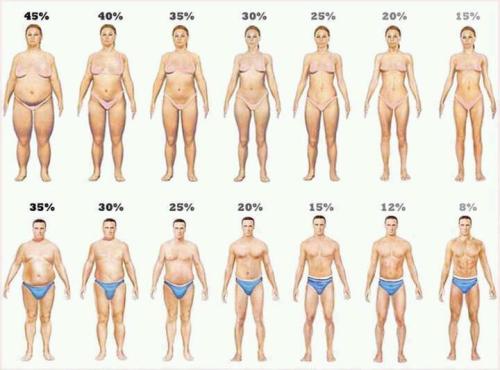
Looking at physique examples is another quick way to estimate body fat levels. Using the examples above can usually get you within 5% accuracy. But even this or skinfold caliper tests don’t provide the accuracy I’m looking for. Only 3 and 4 compartment models provide accurate body composition results that are acceptable for measurement of individuals [7]. Instead of 2 compartment models that estimate fat and fat-free mass, we want a third of fourth compartment to estimate bone and water weight. The more components assessed the more accurate the results.
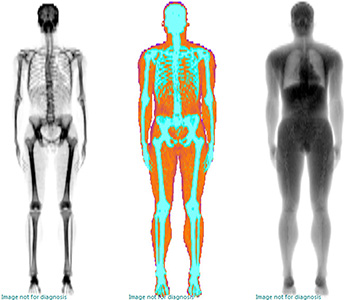
This is where a DEXA scan comes in. I went to Toronto a few months ago to gauge my body fat, bone mineral density, and fat-free mass. This three-compartment model is considered the gold-standard by most. These scans cost around $150, take ~15 minutes to complete, and are available in most cities. If you’re interested in getting one, get a sample DEXA report before scheduling yours. Various locations have different DEXA machines that assess varying body components. I liked the Toronto one more than my local one because it analyzed more metrics like fat location and muscle imbalances. These results showed I have 10.4% body fat. Much different than my scale’s 6% or 14% readings. And a result I can trust. [8]
If DEXA scans aren’t available to you, InBody scales are fairly accurate too [9]. Slightly less accurate than DEXA, but cheaper, quicker, and more convenient. I got assessed by an InBody 570 around the same time as DEXA and it came back with 9%. My visceral fat level was a 2 with ideal numbers being below 5. Now that I have accurate body fat percentage readings, what’s optimal?
Optimal Body Fat Percentage
Optimal body fat percentages should consider two components: age and gender [10]. Regarding age, body fat doesn’t appear to increase significantly after the age of 40. Whether you’re 40 or 65, total body fat should be about the same. But decreasing muscle mass is likely even while attenuating the effects with exercise. That means your fat mass could stay the same, but your fat-free mass may decrease. This leads to a higher body fat percentage even if total body fat hasn’t changed. This typically happens with age, especially after 60. [11]
Regarding gender, women typically have ~10% more body fat than men [12]. This added body fat is seen throughout one’s lifespan and is needed to maintain reproductive health. Knowing this, we can use age-stratified analyses to gauge the optimal body fat percentage for human health [13, 14]. Here’s what they look like:
I’m a 31-year-old male which puts my optimal range between 9 and 12.5%. According to DEXA, at 10.4% I sit in the middle of that. A similar aged female would aim for 19 to 22.5%.
Now some people may consider these ranges low. Maybe they’ve had body fat percentages in this optimal range or know people in these ranges that weren’t healthy. That’s possible. Because how you achieve your low body fat matters. Smoking works but no one recommends it. Various diseases and disorders cause low body fat but that isn’t ideal. Certain medications lower body fat. Stomach stapling lowers body fat. Many bodybuilders have achieved it with extreme bulk and cuts that cause nutrient deficiencies. Various models have done it with eating disorders or excessive cardio. All of these can get you into the optimal body fat range while achieving far from optimal health. How you get there matters, and you don’t want to do it the wrong way.
These ranges can and should be achieved with healthy habits. The same ones I discuss on this blog every week. A whole foods plant-based diet that avoids nutrient deficiencies. A progressive strength and conditioning program to build muscle. A proper sleep schedule that optimizes sleep quality. And building these habits for health excellence automatically drives body fat into optimal ranges. So, if you’re not in the right range, I’d recommend doubling down on your habits.
Final Thoughts
Body fat is essential for life. You need it. But most people have too much. That excess body fat leads to a less enjoyable life today that’ll eventually cause problems decades down the road. Implementing the same habits for health excellence that I frequently discuss can help you get to optimal ranges automatically. Instead of focusing on the goal, build the healthy habits that lead you there. At 10.4% body fat I’m in the ideal range but I think I can get a smidge lower with another year of training under my belt. I’ll keep you updated and hopefully get another DEXA in a year. But for now, I’ll keep focusing on my habits for health excellence.

